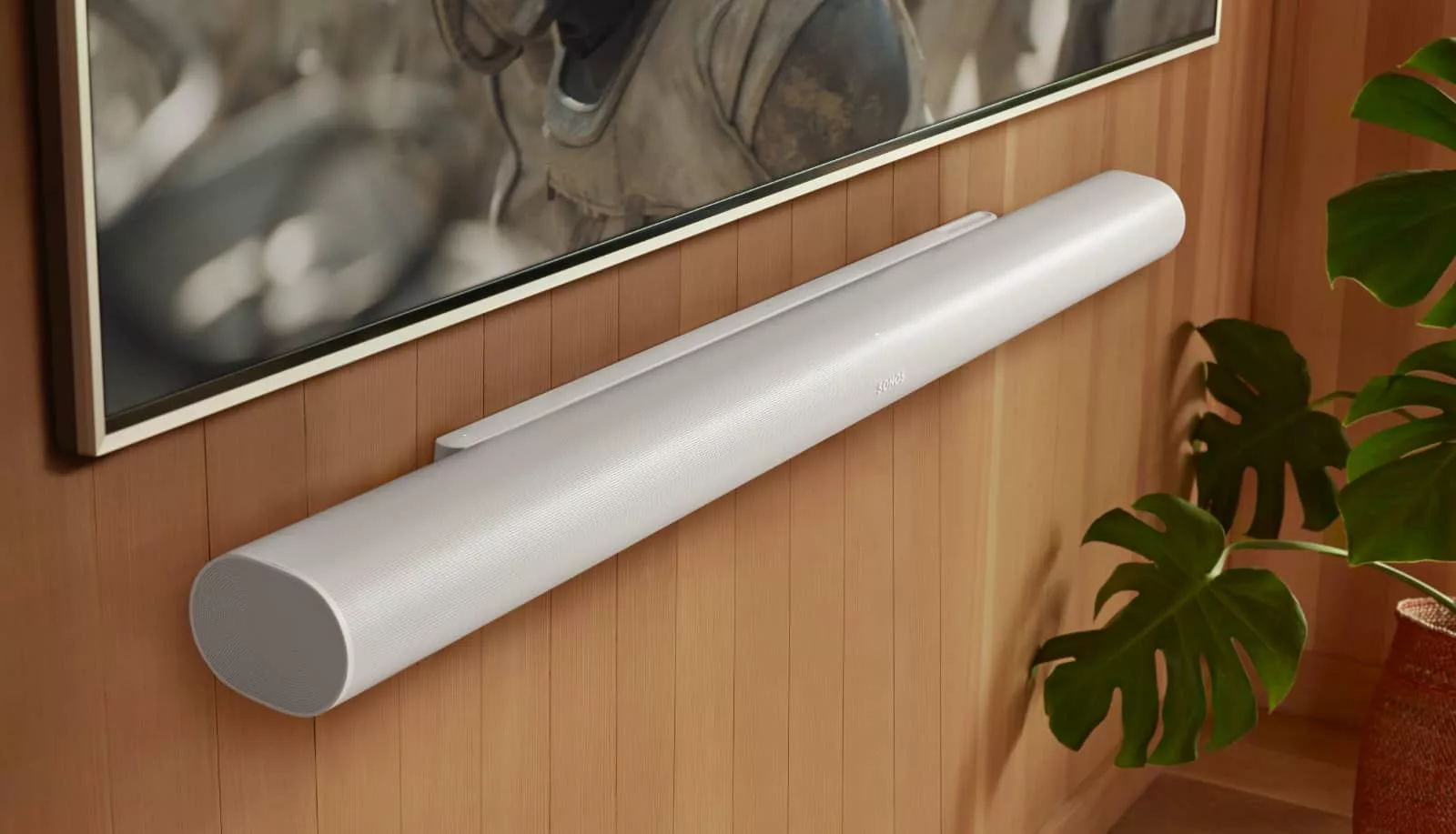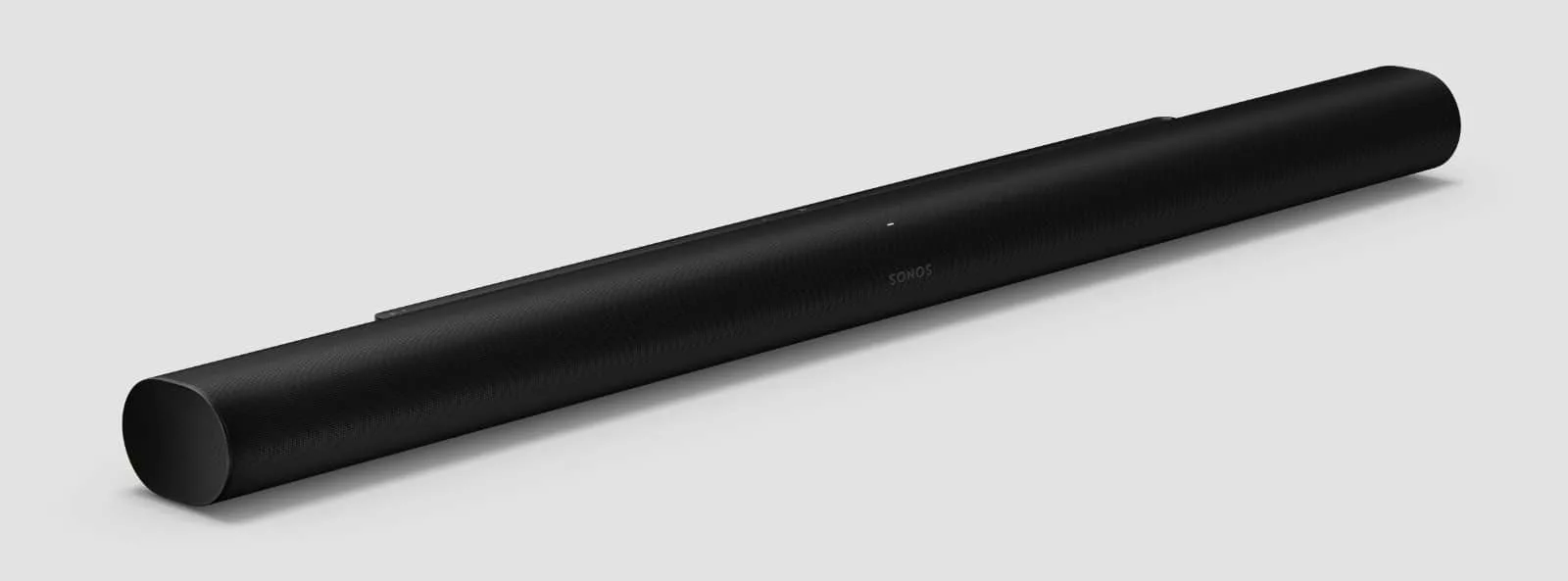A larger and punchier Arc soundbar is on the cards in the Sonos Arc Ultra, and it comes with a new way to make bass work from inside a small system.
Home cinemas have always been a thing, but ever since covid hit in 2020, cinemas at home have been improving in leaps and bounds. Bigger TVs and better sound are just normal parts of what you can expect in the living room, as families make their movie experience even more impressive without needing to leave the house.
Soundbars have helped deliver that improvement to sound, thanks in part to just how easy they are to add to your home.
Rather than need a receiver, speakers, and a stand or two, plus the cabling, you can connect a soundbar to a new TV, and you’re pretty much done. It’s easy.
Of course, soundbars come in all sorts of shapes and sizes, but the past few years have delivered more capable soundbars thanks to the inclusion of spatial audio, a technology that creates sound not just around the sides, but above, as well. It’s an experience more like that of the cinema, and instead of speakers built into the ceiling, virtual speakers work from timing the sounds of audio as they bounce on walls and ceilings or from front speakers, or even both.
The technologies came together in 2020’s Sonos Arc, easily one of the better Atmos soundbars released in the past few years, though things have changed in that time.
It has led Sonos to make a new “Ultra” edition of the Arc, adding a few more speakers and some internal design changes, alongside some less obvious aesthetic changes, set to arrive later in October.

Big bass, little package
A big part of the new soundbar is how Sonos is handling bass, and it is changing things up. While the original Arc produced a surprising amount of bass relative to its size, the Arc Ultra looks to challenge that experience with more.
To do that, Sonos has been forced to reinvent the sub, or more specifically, the system inside its soundbars that generates bass.
The result is called “Sound Motion”, a name that’s one part marketing and another literal interpretation. Sound Motion is a small flat box that uses a combination of motors, magnets, and suspension arms to move air inside the soundbar, creating more space for air to move.

It’s different from a conventional bass unit which typically relies on one large motor and membrane to move air, with Sonos using two force-cancelling membranes and four motors to increase performance.
Arc Ultra is the first Sonos product to get the technology, though Sonos notes that other products could see Sound Motion in the future.
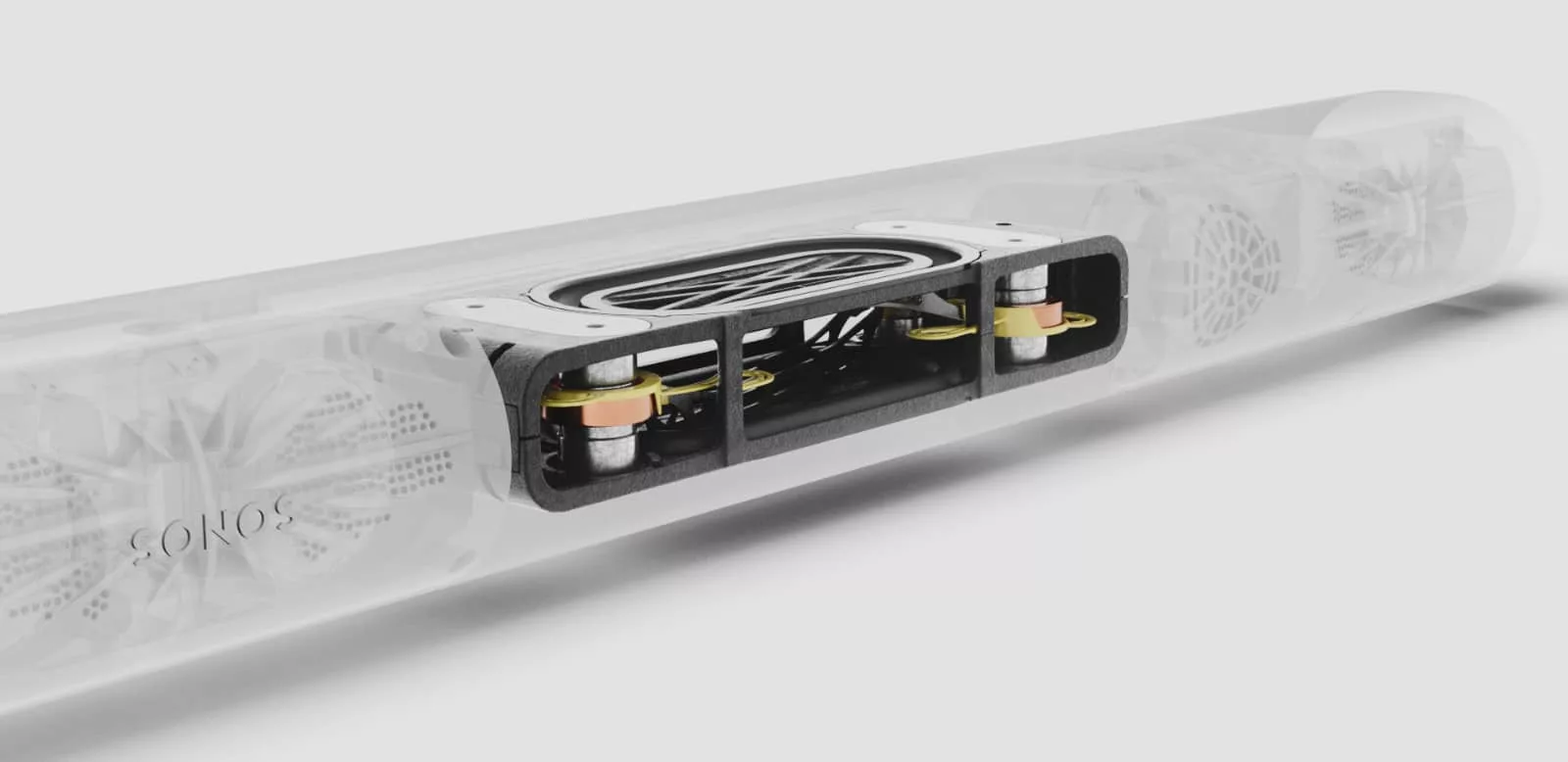
More speakers in the Arc Ultra
It’s not just a new way of handling bass that makes the Sonos Arc Ultra a little bit extra, but rather more speakers on the inside.
While the original Sonos Arc soundbar offered 11 drivers powered by 11 Class-D digital amps, the Arc Ultra increases that number to 14 in total, with 15 Class-D digital amps used for the entire lot.
The changes cover seven angled tweeters for highs, six mid-woofers for mid-range, and two that will fire upward to get that spatial sound going. Bass will be handled by that Sound Motion component, essentially providing more sounds overall in a design that is near the same as its predecessor.
This range of speakers effectively covers a 9.1 sound, hitting nine channels at the front and sides, and the .1 covering the sub from Sound Motion.
Sonos says the Arc Ultra is a 9.1.4 soundbar, though, which means the two upward firing tweeters are likely delivering .2 with the rest handled by psychoacoustic sound, something Sonos has experience in with the current Beam Gen 2 (though we’re checking with Sonos to confirm).
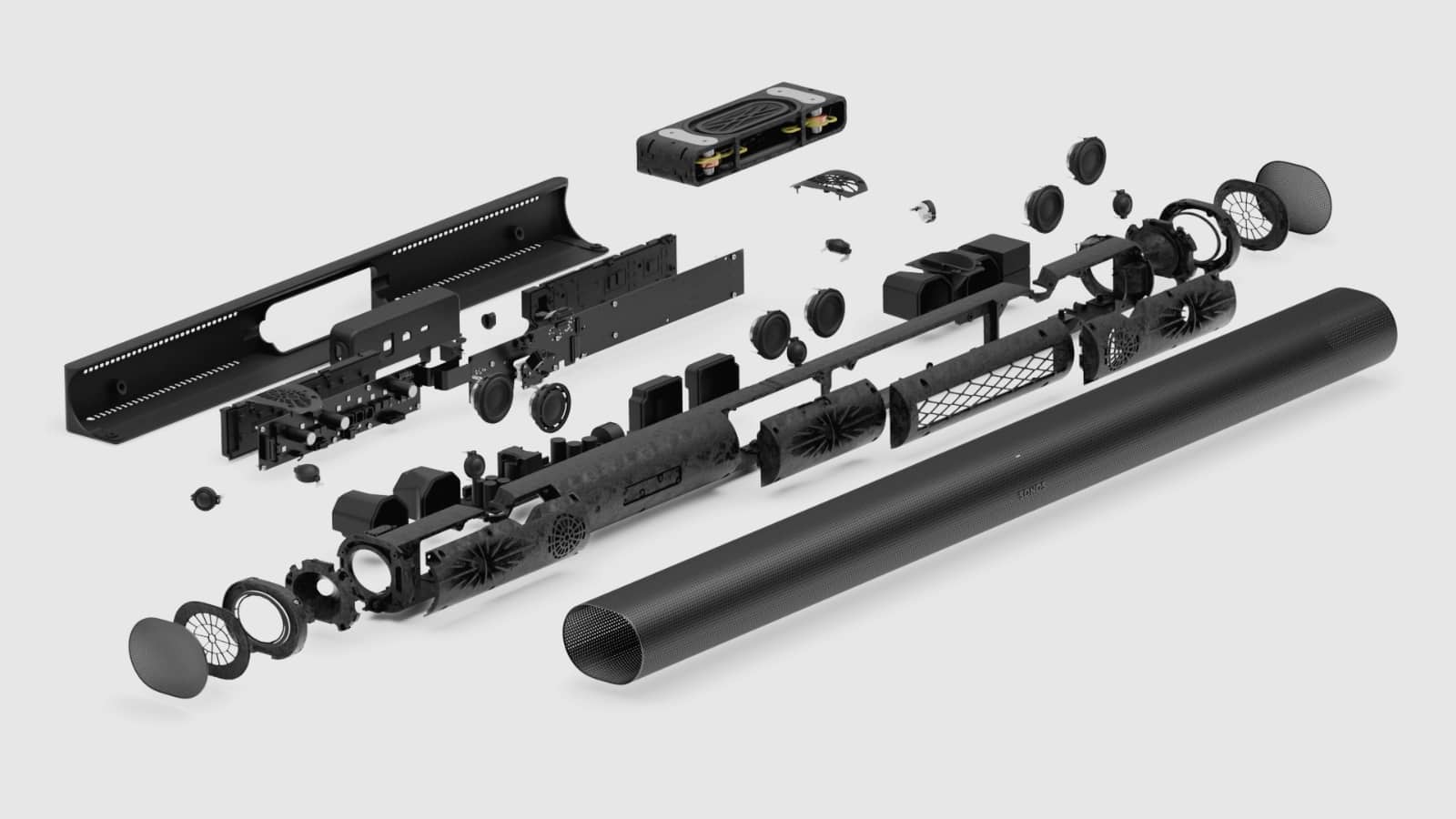
The result will be a bigger sound overall, and one designed to work with the other Sonos spatial speakers, the Era 300. Match a Sonos Arc Ultra with two Era 300 behind you, and the spatial delivery will be more impactful overall.
Microphones in the soundbar will also be used for True Play tuning to help reduce reflections, and provide a better sound matched to specific living spaces where the Arc Ultra will be positioned.
A fourth-gen Sub(woofer), too
While there aren’t new Era speakers for the back — last year’s are perfectly fine, folks — there is a new subwoofer, and it’s distinct from the smaller Sub Mini that you can find for less.
A replacement for the Sub Gen 3, the Sub 4 (as it’s named) includes upgraded processing and memory to deal with sounds, as well as improved WiFi radios to better maintain the connection between the network and the speakers.
The design is technically the same as previous Sonos Sub generations, but can be paired with prior models in case you have one already. Pair two Sub models and you’ll get more bass, potentially adding .2 to your sound experience, punching the bass that much.
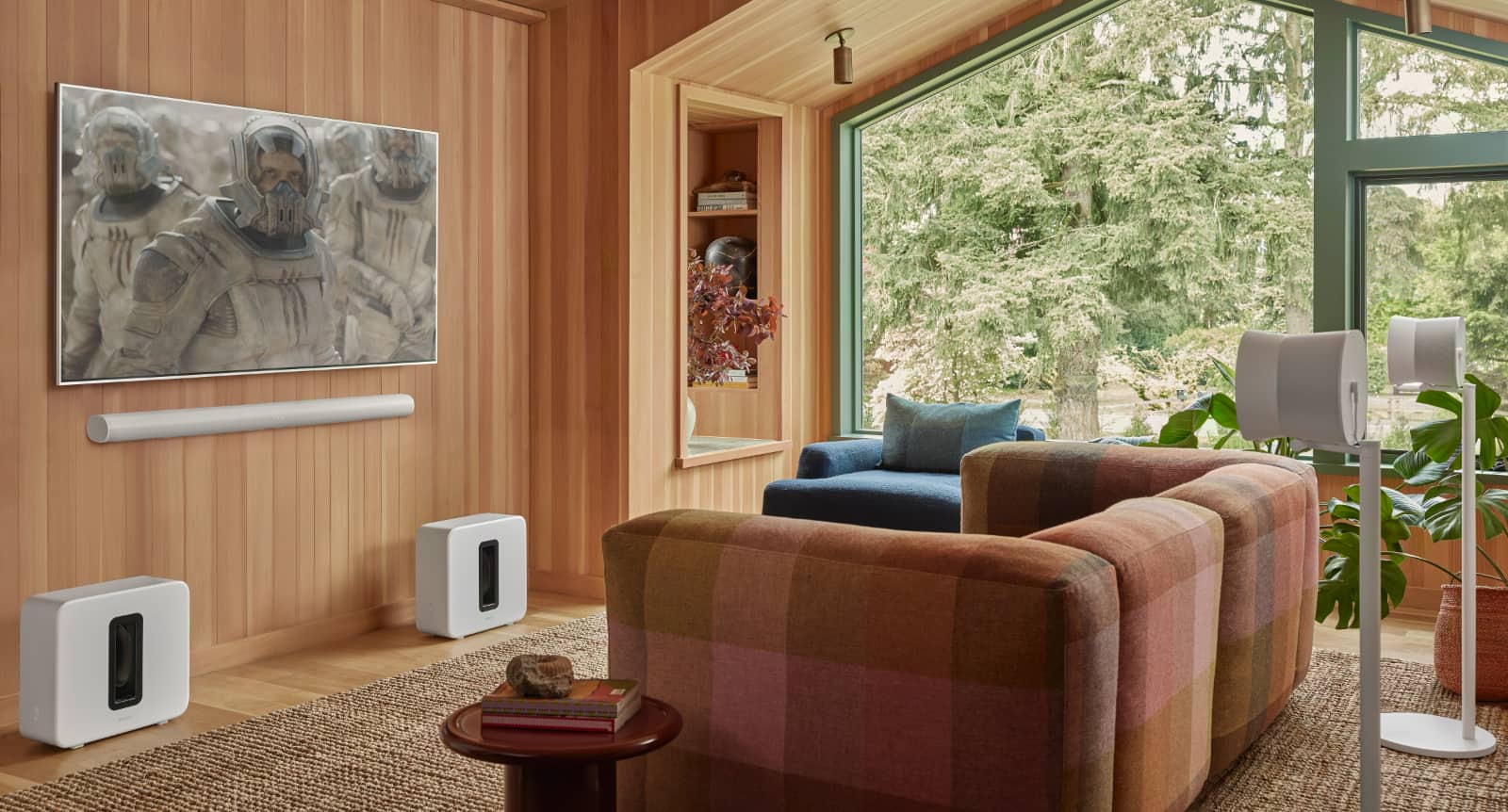
A complete experience
You won’t need two subwoofers for a complete experience, but the option is there should you want to try it.
The Sonos Arc Ultra will also work with Era 300 rears, or without. Both are options.
However, it’s not an upgrade designed to work with the current Sonos Arc, as you’d be replacing one for the other, bolstering the sound with the new model
“Arc Ultra is a reimagination of our best-selling soundbar, leveraging this incredible innovation to deliver an unprecedented sound experience from a sleeker design,” said Patrick Spence, CEO of Sonos.
Unsurprisingly, this new model comes at a slightly different price, adding a few hundred on top of an already pricey soundbar.
As such, Australians can expect to find the Sonos Arc Ultra in stores at the end of the month for $1799, a $400 increase from the $1399 original Arc. The Sub also increases in price, too, up from $999 and set to cost $1299 when both are released at the end of October.
